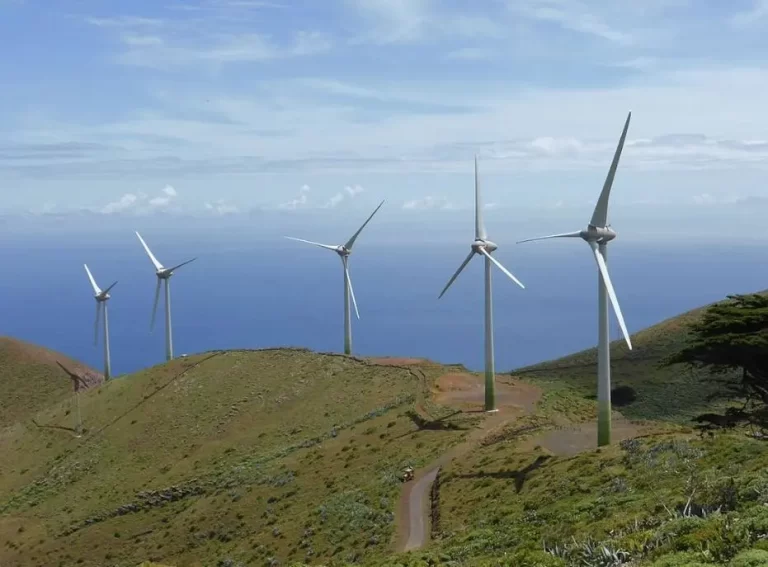La incertidumbre mundial y los desafíos que tiene por delante la economía dominicana fueron expuestos por el director para el Hemisferio Occidental del FMI, Alejandro Werner, en una entrevista exclusiva para Listín Diario, con esta redactora, con motivo de los 130 años de este medio.
¿Cuál considera usted es el actual desempeño de la economía dominicana en un contexto pre-electoral local y de incertidumbre global?
Antes que nada, quisiera señalar que el rápido crecimiento registrado por República Dominicana en los cinco últimos años es notable: la economía se expandió en promedio 6Ω% en ese período y el crecimiento alcanzó un máximo de 7% en 2018. Esa es la tasa más alta de América Latina y el Caribe y la novena más rápida del mundo. Gracias a la expansión económica y a la política social en que se centró el gobierno, se han creado muchos empleos nuevos, el ingreso real ha aumentado, y la pobreza y la desigualdad han disminuido significativamente.
¿En cuál posición queda RD respecto de sus pares de la región centroamericana? En su informe sobre una Recuperación Atascada plantea la debilidad de la región, ¿cómo quedaría RD?
Al igual que en el resto de la región, el crecimiento se desaceleró en el primer semestre de 2019. Ha habido factores tanto mundiales como locales que contribuyeron a esta desa-celeración, pero el reciente estímulo monetario debería respaldar el crecimiento durante el resto del año. Nuestra expectativa es que el crecimiento se asiente en 5% en 2019 óuno de los más altos de la región y en consonancia con el potencialópero, como en otras partes, esta perspectiva está sujeta a riesgos.
¿Cuáles desafíos observa para la economía dominicana a corto, medio y largo plazo?
A corto plazo, el desafío mayor es aprovechar los tiempos que todavía son favorables para afianzar los elementos que sirven de amortiguadores, como una posición fiscal más sólida y una continua acumulación de las reservas internacionales. De esa manera, la economía puede resistir mejor si las condiciones externas desmejoran significativamente; por ejemplo, si se agudiza la desaceleración de la economía mundial o si suben los precios del petróleo. A mediano y largo plazo, los principales desafíos consisten en eliminar los cuellos de botella estructurales que limitan el crecimiento y mejorar las redes de protección social.
¿Aún con una ralentización RD espera mantener su crecimiento dentro de su potencial, qué política recomienda para seguir creciendo a futuro?
Los cuellos de botella estructurales que están más arraigados pueden crear una barrera al alcance y el ritmo de crecimiento de una economía. República Dominicana no es una excepción. Uno de los principales obstáculos que hay que abordaróprobablemente el más urgenteósigue siendo la debilidad del sector eléctrico nacional. Las interrupciones del suministro eléctrico son costosas para los negocios y dañan la competitividad de la economía.
Aunque encontrar una solución duradera a los problemas de la electricidad podría requerir un consenso nacional, que aún debe formalizarse plenamente en un Pacto, las autoridades podrían realizar reformas para asegurarles a los hogares y las empresas un acceso confiable a este servicio. Para eliminar los obstáculos al crecimiento, también habría que seguir mejorando el clima de negocios, reforzar el marco institucional, promover la innovación y fortalecer las capacidades de la fuerza laboral.
Al mismo tiempo, para ser sostenible, el crecimiento tendría que ser más incluyente. Como ya mencioné, República Dominicana logró un buen avance en este sentido: los ingresos prácticamente se duplicaron desde la crisis financiera de 2003-04, y la pobreza y la desigualdad disminuyeron significativamente. Para profundizar las mejoras habrá que seguir fortaleciendo los sectores de la salud y la educación, así como las redes de protección social. Sin embargo, muchas de estas reformas requerirían más espacio fiscal.
¿Está la economía dominicana en el umbral del tope de endeudamiento público o cree que la deuda aún es sostenible?
Poder sustentar la actual trayectoria de endeudamiento dependerá de las políticas que adopte el gobierno. Por ahora, nuestra expectativa es que la deuda pública se mantendrá en una trayectoria ascendente y que la carga que representan los intereses seguirá elevada en relación con el ingreso público. Esto impone algunas restricciones al crecimiento porque mantiene elevados los costos de endeudamiento, desalienta la inversión privada y reduce el espacio para la inversión pública y los programas sociales.
¿Cree que a partir de 2020 la RD no puede dejar de aprobar una reforma tributaria?
En nuestra opinión, hay dos cosas que se pueden hacer. Primero, se necesita un esfuerzo fiscal significativo para recortar los déficits y encauzar la deuda hacia una trayectoria descendente.
El gobierno puede elegir las variables de ajuste, pero entre las posibilidades mencionaría medidas exhaustivas para ampliar la base tributaria, racionalizar los incentivos y las exenciones impositivas, y aliviar el lastre que el sector eléctrico representa para el presupuesto, lo cual nos lleva a las reformas estructurales que ya mencioné. A medida que la carga de los intereses disminuye con el ajuste, se liberan recursos para el gasto social e inversiones públicas más eficientes.
Segundo, se puede mitigar la incertidumbre en torno a la sostenibilidad de la política fiscal dejando en claro públicamente el objetivo de deuda pública a mediano plazo y la manera de alcanzarlo. Para eso sería adecuado un marco de responsabilidad fiscal, que podría incluir esa ancla fiscal a mediano plazo y establecer ciertas reglas operativas para alcanzarla.
¿Puede opinar sobre la política monetaria de RD y su coordinación con la política fiscal?
Con la transición al régimen de metas de inflación en 2012, el BCRD logró transformar el marco de política monetaria y mejorar la transparencia y la credibilidad de sus decisiones. Esto ha respaldado la estabilidad macroeconómica a lo largo de los años. La coordinación con las políticas fiscales también ha mejorado: dado que tanto el Banco Central como el gobierno gestionan la deuda pública, esa coordinación es importante para que los mercados internos de deuda funcionen mejor.
Fuente: Listin Diario[:en]
Exclusive interview with Alejandro Werner
Global uncertainty and the challenges ahead of the Dominican economy were brought to light by IMF Director for the Western Hemisphere, Alejandro Werner, in an exclusive interview for Listín Diario, with this editor, in celebration of the newspaper´s 130th anniversary.
What do you consider to be the current performance of the Dominican economy in a local pre-electoral context and of global uncertainty?
First of all, I would like to point out that the rapid growth registered by the Dominican Republic in the last five years is remarkable: the economy expanded by an average of 6Ω% in that period and the growth reached a maximum of 7% in 2018. That is the highest rate in Latin America and the Caribbean and the ninth fastest in the world. Thanks to the economic expansion and social policy that the government focused on, many new jobs have been created, real income has increased, and poverty and inequality have declined significantly.
Where is DR ranked in relation to its peers in the Central American region? In your report on a Stalled Recovery you bring up the weakness of the region, how would DR fare?
As in the rest of the region, growth slowed in the first half of 2019. There have been both global and local factors that contributed to this slowdown, but the recent monetary stimulus should support growth during the rest of the year. We expect growth to be at 5% in 2019, one of the highest in the region and in line with the potential, but like everywhere, this view is subject to risks.
What challenges do you see for the Dominican economy in the short, medium and long term?
The biggest short-term challenge is to avail of the times that are still favorable to strengthen the elements that serve as buffers, such as a stronger fiscal position and a continuous accumulation of international reserves. In that way, the economy can resist better if external conditions deteriorate significantly, for example, if the slow-down of the world economy worsens or if oil prices rise. In the medium and long term, the main challenges are to eliminate the structural bottlenecks that limit growth and improve social welfarenetworks.
Even with a slowdown DR expects to keep its growth within its potential. What policy do you recommend for a continued growth in the future?
The more entrenched structural bottlenecks can create a barrier to the scope and pace of growth of an economy. Dominican Republic is no exception. One of the main obstacles that must be addressed is probably the most urgent, the weakness being the national electricity sector. Disruptions in the electricity supply are costly for businesses and damage the economy´s competitiveness.
Although finding a lasting solution to electricity problems may require a national consensus, which must still be fully formalized in a Pact, the authorities could make reforms to ensure homes and businesses reliable access to this service. In order to eliminate the obstacles to growth the business climate should also be improved, the institutional framework strengthened, innovation promoted, and the workforce capacities strengthened.
At the same time, growth would have to be more inclusive to be sustainable. As I mentioned, the Dominican Republic made good progress in this regard: income almost doubled since the financial crisis of 2003-04, and poverty and inequality declined significantly. To elaborate these improvements, the health and education sectors, as well as the social welfare networks, will have to be strengthened. However, many of these reforms would require more fiscal leeway.
Is the Dominican economy at the threshold of the public debt ceiling or do you think the debt is still sustainable?
Being able to support the current indebtedness track will depend on the policies adopted by the government. For now, we expect the public debt to remain on an upward track and that the burden of interest will remain high in relation to public revenue. This imposes some restrictions on growth because it keeps borrowing costs high, discourages private investment and reduces leeway for public investment and social programs.
Do you think that the DR cannot avoid passing a tax reform after 2020?
In our opinion, there are two things that can be done. First, a significant fiscal effort is needed to cut deficits and push debt towards a downward track.
The government can choose the adjustment variables, but among the possibilities I would mention exhaustive measures to broaden the tax base, rationalize incentives and tax exemptions, and relieve the burden that the electricity sector means for the budget, which leads us to structural reforms I already mentioned. As the interest burden decreases with the adjustment, resources for social spending and more efficient public investments are released.
Second, uncertainty regarding the sustainability of fiscal policy can be mitigated by clarifying the medium-term public debt aim and the way to achieve it. To do so, a fiscal responsibility framework would be appropriate, which could include that medium-term fiscal anchor and establish certain operational rules to achieve it.
Can you comment on the DR´s monetary policy and how it coordinates with fiscal policy?
With the transition to the inflation targeting regime in 2012, the BCRD managed to transform the monetary policy framework and improve the transparency and credibility of its decisions. This has supported macroeconomic stability over the years. Coordination with fiscal policies has also improved: given that both the Central Bank and the government manage public debt, such coordination is important for internal debt markets to function better.
Source: Listin Diario[:]




